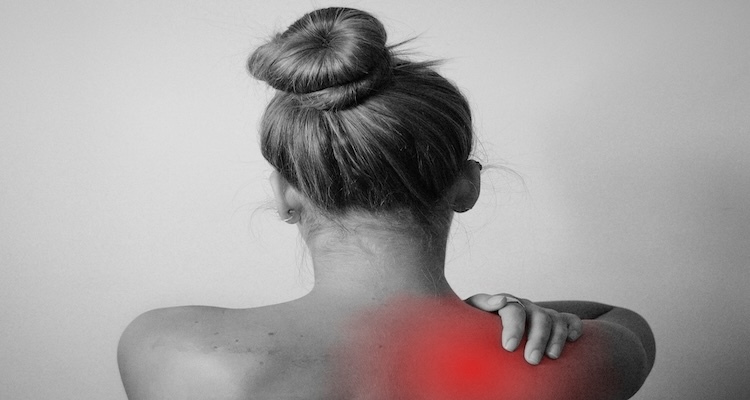
The shoulder joint, a ball-and-socket joint, is a complex structure connecting the humerus (arm bone), scapula (shoulder blade), and clavicle (collarbone). It enables a wide range of motion, crucial for daily activities and athletic performance. Ligaments and tendons provide stability, while muscles surrounding the joint, such as the rotator cuff, facilitate movement and support.
Shoulder joints are susceptible to injury in sports due to their remarkable range of motion and complexity. Intense physical activities, sudden movements, and repetitive motions common in sports can strain the ligaments, tendons, and muscles supporting the joint. Overuse, improper technique, and inadequate warm-up increase injury risk. Impact from contact sports or falls may cause dislocations, fractures, or tears. Additionally, muscle imbalances or weakness in surrounding muscles, like the rotator cuff, can lead to instability. Athletes often push their bodies to extremes, increasing vulnerability to strains, sprains, and chronic conditions like tendonitis or impingement, necessitating preventive measures and proper training techniques.
Understanding the most common shoulder injuries in sports is crucial for prevention, proper treatment, and rehabilitation.
Among the most common shoulder injuries, rotator cuff tears involve damage to the muscles and tendons surrounding the shoulder joint. Rotator cuff tears often result from repetitive overhead motions, such as throwing in baseball, serving in tennis, or swimming strokes. Direct trauma or sudden forceful movements can also cause tears. Symptoms include pain, weakness, and limited range of motion, especially when lifting the arm. Treatment may range from conservative measures like rest, physical therapy, and anti-inflammatory medication to surgical repair for severe tears.
Shoulder dislocation occurs when the humerus pops out of the socket (glenoid) due to a sudden impact or excessive rotation of the joint. Sports like football, basketball, and rugby carry a high risk of shoulder dislocations due to collisions or falls. Athletes may experience intense pain, swelling, and inability to move the affected arm. Immediate medical attention is necessary to relocate the shoulder joint. Recurrent dislocations may require surgical intervention to stabilize the joint and prevent further episodes.
Shoulder impingement syndrome occurs when the rotator cuff tendons or bursa become compressed against the acromion, a bony projection of the shoulder blade. Overhead activities common in sports like volleyball, tennis, and weightlifting can lead to repetitive rubbing and irritation, causing inflammation and pain. Symptoms include pain when reaching overhead, weakness, and limited shoulder mobility. Treatment typically involves rest, physical therapy to strengthen muscles and improve posture, and corticosteroid injections for pain relief. In severe cases, surgery may be necessary to create more space in the shoulder joint.
The labrum is a ring of cartilage that surrounds the glenoid socket, providing stability to the shoulder joint. Labral tears often result from traumatic injuries, such as a fall onto an outstretched arm or forceful overhead motions. Athletes in sports like gymnastics, baseball, and hockey are at increased risk of labral tears due to repetitive stress on the shoulder joint. Symptoms include popping or clicking sensations, shoulder instability, and pain with certain movements. Treatment may involve rest, physical therapy, and in some cases, arthroscopic surgery to repair or reattach the torn labrum.
The AC joint, where the clavicle meets the acromion process of the scapula, is susceptible to sprains from direct impact or falls onto the shoulder. Sports like football, rugby, and mountain biking pose a high risk of AC joint sprains due to collisions and crashes. Symptoms include pain, swelling, and tenderness over the AC joint, along with limited shoulder mobility. Treatment typically involves rest, ice, compression, and elevation (RICE), along with physical therapy to strengthen surrounding muscles and restore range of motion. Severe AC joint injuries may require surgical intervention to stabilize the joint.
Frozen shoulder is characterized by stiffness, pain, and limited range of motion in the shoulder joint. The exact cause is unknown but may be associated with prolonged immobilization, trauma, or underlying medical conditions. Athletes may develop frozen shoulder as a result of overuse injuries or following prolonged periods of inactivity due to injury recovery. Treatment usually involves physical therapy, stretching exercises, and anti-inflammatory medication to alleviate symptoms and restore shoulder mobility. In severe cases, manipulation under anesthesia or surgical release of the tight shoulder capsule may be necessary.
Prevention strategies for shoulder injuries in sports include proper warm-up and stretching before activities, maintaining good posture and technique, gradually increasing intensity and duration of training, and incorporating strength and conditioning exercises to improve shoulder stability and muscle balance. Athletes should also use appropriate protective gear and equipment and seek prompt medical attention for any signs of shoulder pain or dysfunction. By understanding the common shoulder injuries in sports and implementing preventive measures, athletes can reduce the risk of injury and optimize their performance and longevity in their chosen sports.
You should always consult a qualified healthcare professional about any injury prevention and/or injury management strategies. If you want to find a specialist to consult do search our easy to use directory to find a sports physiotherapist, chiropractor, sports therapist, or osteopath near you.
